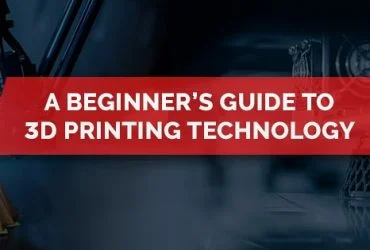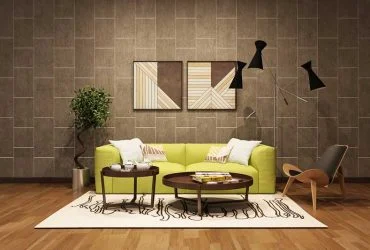Discover the Powerful Benefits of 3D Rendering
Imagine presenting a design to a client and seeing their excitement as they explore a lifelike, interactive model before it even exists. The benefits of 3D rendering go beyond aesthetics, offering efficiency, cost savings, and unmatched accuracy. This powerful visualization tool enhances decision-making, marketing, and customer engagement across industries.
With 3D rendering technology, businesses in architecture, product design, and entertainment can streamline workflows, accelerate project approvals, and create stunning, photorealistic visuals. Embracing this innovation allows 3D design companies to transform ideas into reality, delivering impactful presentations that drive success and set new standards in design and communication.
What is 3D Rendering?
3D rendering converts 3D models into high-quality, two-dimensional images or animations using computer software. It allows designers, architects, and manufacturers to visualize projects with incredible realism before production. The process involves lighting, texturing, and shading techniques that make images almost indistinguishable from real-life photographs. The 3D rendering benefits extend to multiple industries, including real estate, healthcare, automotive, and e-commerce, making it a versatile and indispensable tool in modern business operations.
In recent years, advancements in 3D rendering for design have led to more accessible and affordable rendering solutions. With powerful software tools and cloud-based rendering capabilities, businesses of all sizes can now leverage advantages of 3D rendering without investing in expensive hardware. From startups to global enterprises, companies are finding new ways to harness the power of realistic 3D rendering to gain a competitive edge.
Top Advantages of 3D Rendering
-
Enhanced Visualization
One of the biggest 3D visualization benefits is its ability to provide an accurate representation of a project before it’s built. Unlike traditional sketches or 2D blueprints, realistic 3D rendering creates immersive visuals that help stakeholders understand the design intent clearly. This is particularly useful in real estate, where buyers can view properties virtually, eliminating the need for physical visits.
Furthermore, industries such as interior design, fashion, and retail use 3D rendering for design to present multiple options to clients, allowing them to visualize different layouts, materials, and color schemes before making a decision. This reduces the chances of errors and costly rework.
-
Faster Iterations and Prototyping
With 3D rendering for product development, companies can quickly create prototypes, make modifications, and test different design variations without the need for expensive physical models. This accelerates the development process and allows designers to experiment with textures, colors, and shapes more efficiently. In the automotive and manufacturing sectors, this advantage speeds up innovation and reduces time-to-market.
Traditional prototyping can be expensive and time-consuming, requiring materials, labor, and multiple physical iterations. 3D rendering technology eliminates these hurdles by enabling businesses to create, test, and refine designs digitally. Additionally, companies can use 3D rendering accuracy to test product feasibility, ensuring that the final physical product meets exact specifications before production.
-
Cost Savings
One of the most compelling 3D rendering advantages is the reduction in production costs. Physical models, photography, and elaborate set designs can be expensive and time-consuming. By leveraging cost savings with 3D rendering, businesses can eliminate the need for costly photo shoots and prototype development. This is especially beneficial for real estate developers who can showcase properties through virtual tours instead of building sample houses.
In addition to reducing production costs, 3D rendering for virtual walkthroughs saves money by minimizing costly mistakes. For example, in construction and interior design, spotting design flaws in a digital render is far more cost-effective than identifying issues during or after construction. Businesses can also save on logistics and travel costs by presenting virtual walkthroughs instead of requiring clients to visit physical locations.
-
Improved Communication
Clear communication between designers, clients, and stakeholders is crucial in any project. 3D rendering improves collaboration by offering precise and visually rich representations of concepts. Clients can provide feedback more effectively, reducing misunderstandings and minimizing revisions. In interior design, for example, clients can see exactly how a space will look with different furniture layouts, lighting setups, and material choices.
With accuracy of 3D rendering, professionals can provide clients with an in-depth understanding of the design, making it easier to align expectations. Architects and engineers, for example, can use rendered models to demonstrate technical aspects such as material durability, structural integrity, and spatial layouts. This enhances decision-making and fosters a smoother project workflow.
-
Marketing and Sales Advantages
High-quality visuals play a crucial role in advertising and branding. 3D rendering enhances client presentations by creating eye-catching, professional images that can be used in brochures, websites, and promotional campaigns. Businesses that use 3D rendering technology for marketing gain a competitive edge by presenting products in the best possible light. In e-commerce, 3D product renders allow customers to view products from multiple angles, increasing buyer confidence and conversion rates.
Additionally, industries like real estate and automotive benefit from 3D rendering by using photorealistic images in digital ads and social media campaigns. These visuals capture attention more effectively than traditional photographs, driving higher engagement and sales.
-
Accuracy and Precision
Traditional sketches and CAD models often leave room for errors in scale and proportion. 3D rendering ensures that every detail, from dimensions to textures, is meticulously represented. In industries like healthcare, where precision is critical, medical professionals use realistic 3D rendering to create accurate models of organs and surgical plans, reducing risks and improving patient outcomes.
Another critical application is industrial manufacturing, where 3D rendering for product development ensures that machine components are designed with exact measurements. This prevents costly manufacturing errors and enhances product quality.
-
Virtual Walkthroughs
One of the standout features of 3D rendering for virtual walkthroughs is the ability to offer interactive experiences. Real estate developers, architects, and interior designers can create lifelike virtual tours that allow clients to explore spaces before construction begins. This helps in decision-making, reduces errors, and enhances overall customer satisfaction.
Virtual walkthroughs are also widely used in gaming, tourism, and event planning. Hotels, for instance, use 3D rendering technology to provide guests with a preview of their accommodations, while museums create virtual exhibits for online visitors. The application possibilities are endless.
Conclusion
The impact of 3D rendering in different industries is undeniable, offering benefits such as improved visualization, cost efficiency, and enhanced precision. This technology plays a crucial role in architecture, automotive design, healthcare, and product marketing by enabling businesses to create realistic, high-quality visuals that improve decision-making and communication.
Whether used for architectural visualization, product prototyping, or medical imaging, 3D rendering continues to drive efficiency, streamline workflows, and elevate the overall presentation of concepts. As advancements in rendering technology progress, its applications will expand further, shaping the future of various sectors.



